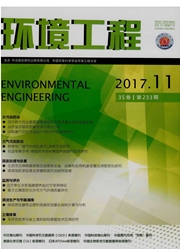

 中文摘要:
中文摘要:
为控制河流污染底泥中重金属的迁移和生物有效性,将膨润土、硅藻土和海泡石分别进行改性得到有机膨润土、Mn-硅藻土和酸改性海泡石,按照10%的比例添加至污染河流底泥中,进行稳定化实验。结果表明:在2种浸提剂作用下,有机膨润土和酸改性海泡石对Cu、Pb、Cr的释放皆具有抑制效果,Mn-硅藻土对Pb和Cr的释放皆具有一定控制作用。重金属形态分布结果显示,3种稳定化剂对Pb具有良好的修复效果,分别使其稳定态增加92.85%、75.62%、71.02%,提升了Pb的稳定性;有机膨润土和酸改性海泡石使弱酸提取态Cu降低了39.05%和10.35%,Mn-硅藻土和酸改性海泡石则对含Cr底泥具有一定修复作用,使其不稳定态降低了22.25%和35.71%,二者的生物有效性均得到控制。
 英文摘要:
英文摘要:
In order to control the mobility and bioavailability of heavy metals from contaminated river sediment,bentonite,diatomite and sepiolite were synthesized separately to obtain modified clay minerals including organic-modified bentonite( MB),manganese-modified diatomite( MD) and acid-modified sepiolite( MS). These modified stabilization reagents were completely mixed in the contaminated river sediment with the proportion of 10% and the stabilization effects were analyzed accordingly. The results showed that MB and MS had good inhibitory effect on Cu,Pb and Cr under the leaching of two extractants,while MD played a role in the inhibition on the release of Pb and Cr. Heavy metal fractions revealed that all three stabilizers performed positive stabilization action on Pb,with an increase of stable fractions by 92. 85%,75. 62% and71. 02%,respectively,which massively consolidated its immobilization. MB and MS indicated controlling effect on Cu with a decline of exchangeable and carbonate-bound Cu by 39. 05% and 10. 35%,MD and MS controlled the immobility of Cr because they showed some remediation effect of reducing unstable fractions by 22. 25% and 35. 71%,respectively,i. e. both Cu and Cr's bioavailability were reduced efficiently.
 同期刊论文项目
同期刊论文项目
 同项目期刊论文
同项目期刊论文
 Desorption of Metals from Aquifer Soils during Infiltration of Low Ionic Strength Water by pH effect
Desorption of Metals from Aquifer Soils during Infiltration of Low Ionic Strength Water by pH effect 期刊信息
期刊信息
